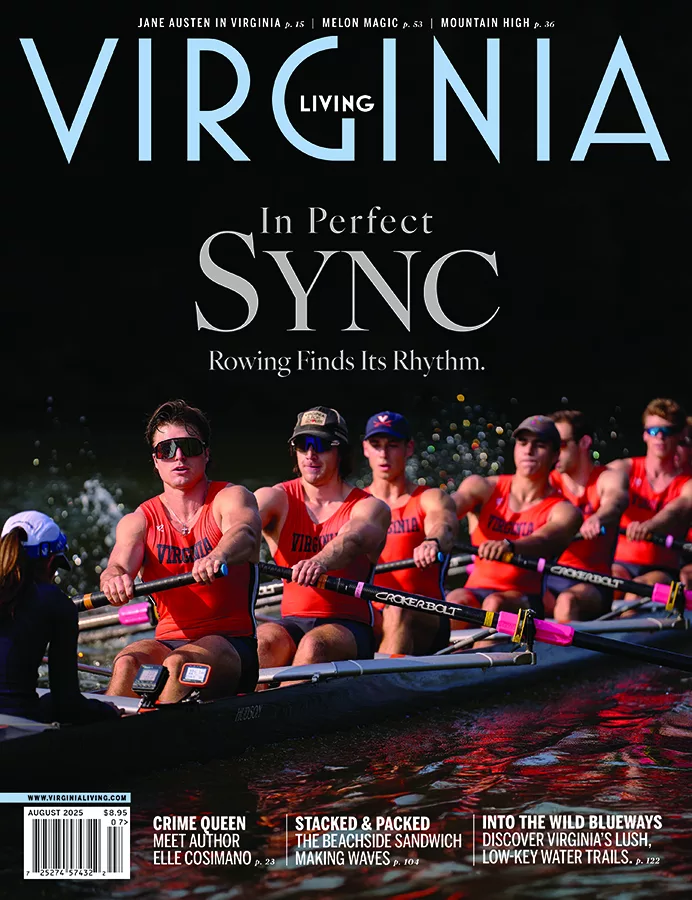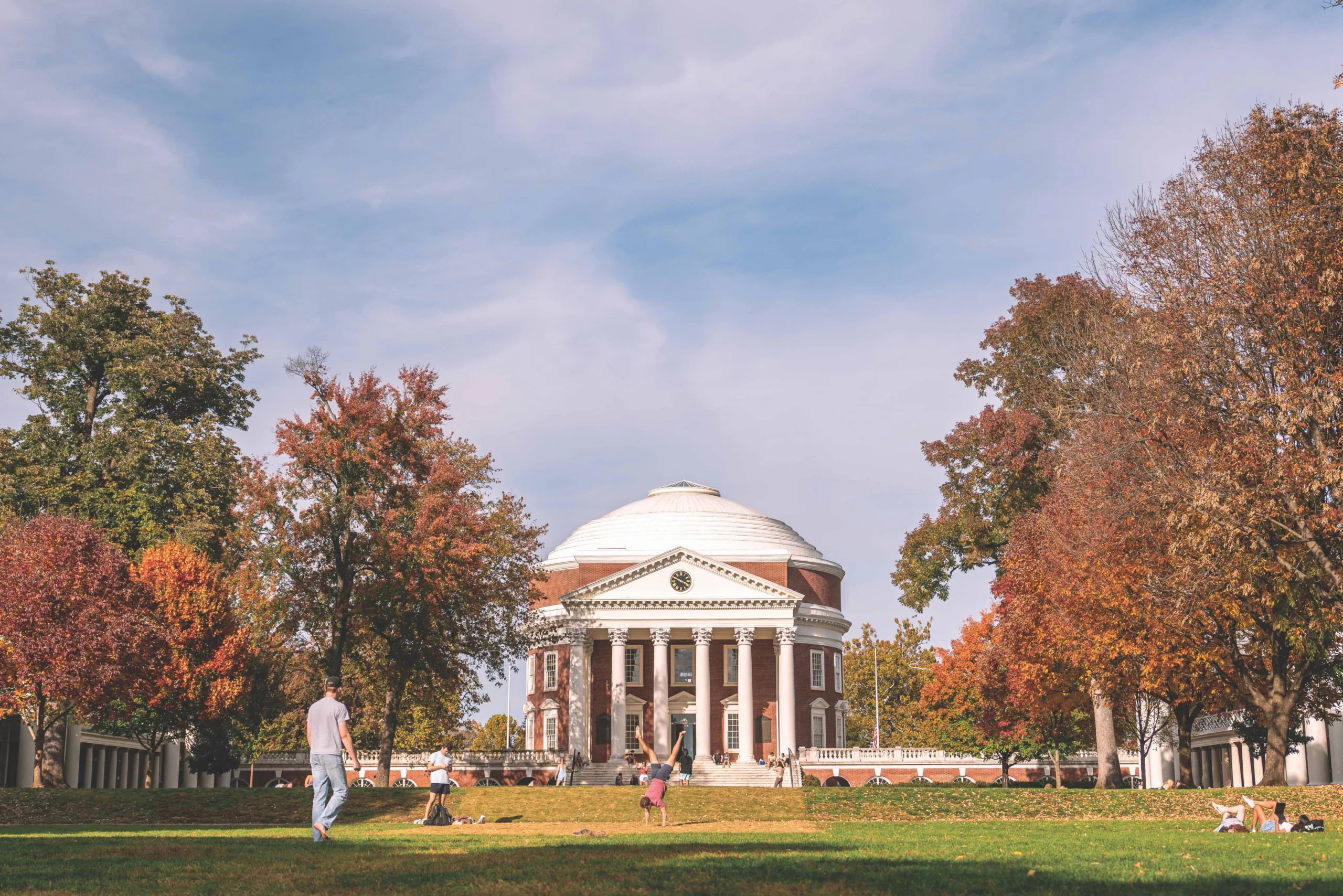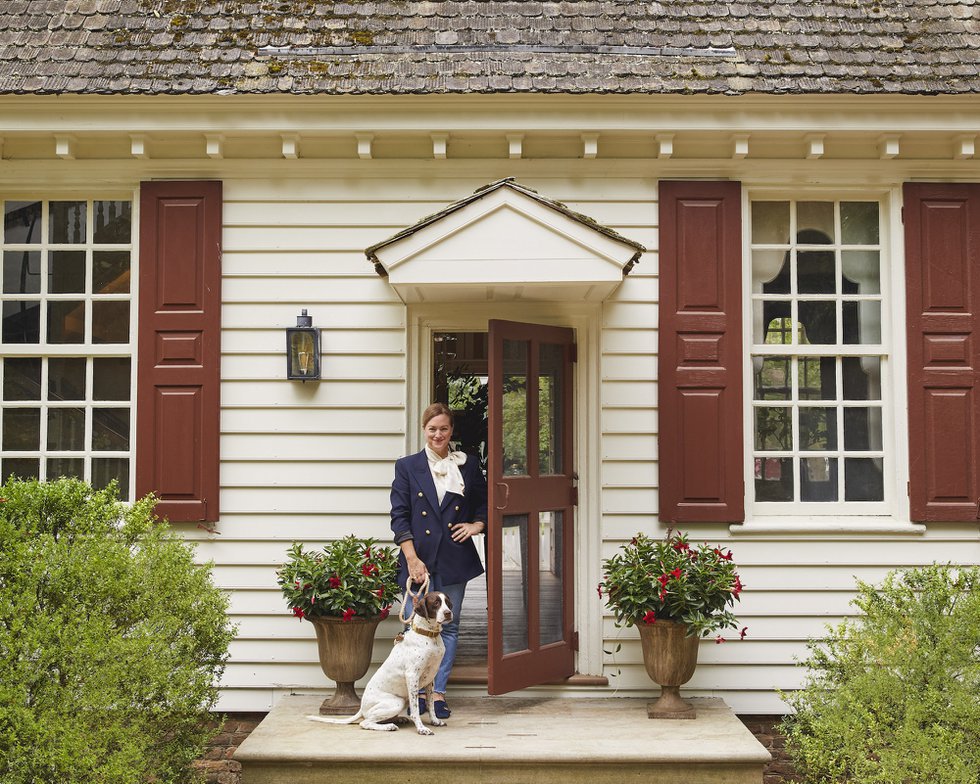More than 250 homes statewide will be open for Historic Garden Week April 17-25—including the 1861 Yarbrough house in Richmond’s Church Hill. By design “neither nicer nor worse than” the identical house next door, today it is fully restored, full of

Rawls lr

Rawls parlor and exterior sketch
A light-drenched front parlor. Right, a sketch of the exterior.

Rawls living room and entrance
Left, the living room. Right, in the entrance hallway, the needlepoint pillows were designed and made by Waite Rawls.

Rawls dining room and kitchen
Left, the dining room was originally served from a kitchen outbuilding. Malou Rawls designed the kitchen, right, with the assistance of Dana Moore. The mosaic tile floor dates to the early 1900s when the basement was a doctor’s office and examination rooms. Cotton, their West Highland white terrier, takes a break.

Rawlses
Waite and Malou Rawls.
In the story of Richmond, Church Hill has played three distinct roles. It was, first, the fashionable 19th-century neighborhood perched above an antebellum downtown, then the fledgling foothold for precocious 1950s preservationists and, finally, the revitalized historic district attracting new or repatriated Virginians, of which Malou and Waite Rawls are relatively recent additions.
Five years ago, Waite Rawls looked at the Greek Revival Yarbrough home on East Broad and was captivated by, among other things, its gigantic windows, which bring light into almost every room. Malou Rawls was in Chicago, closing on the sale of their home there, when her husband called and said to her, “‘Malou, this house is going to sell today.” Waite Rawls was right—he bought it before his wife even saw it, and today Malou is happy with the decision. “You don’t get that much natural light in old houses, or even in new, modern houses,” Malou says. The Yarbrough house’s English basement is also unusually bright, as the house is set high above Broad Street.
The house was built by William Yarbrough, who, with Miles Turpin, owned Turpin and Yarbrough Tobacco Co., housed in the nearby Pohlig building. The partners married sisters and built identical houses next door to one another. “Nobody wanted to have the nicer house or the worse house,” says Waite, the director of the Museum of the Confederacy. Work was completed in the summer of 1861; the war had started in April. By the end of the 19th century, the basement had been converted to a doctor’s office and examination rooms, and the mosaic tile floor in that room today dates to that period. In the 1940s and ’50s, the main house and two-story servants’ quarters held 13 apartments. That was before S. Douglas Fleet bought the property in 1967 and began to restore it.
Church Hill’s preservationist movement got its start in the late 1950s. That’s when a handful of forward-thinking ladies began to buy and restore properties. They included Elisabeth Scott Bocock and Louise Catterall, who in 1956 founded Historic Richmond Foundation (HRF), which later merged with the William Byrd branch of the Association for the Preservation of Virginia Antiquities. APVA was started by Mary Wingfield Scott to save the Adam Craig house in Shockoe Bottom, Richmond’s second-oldest structure and childhood home of Jane Craig Stanard—the subject of Edgar Allan Poe’s poem “To Helen.”
By all accounts, the female preservationists were a resourceful group. There are stories that Mrs. Scott, upon hearing of, say, a bank closing, would get in touch with the board chairman to talk him out of the woodwork. Mrs. Bocock paneled the ground floor of one her houses entirely with doors from Caravati’s architectural salvage. Doug Fleet, an HRF president whose mother and sister were 1930s residents of the Adam Craig House, worked closely with Mrs. Bocock on several projects—one of which was the 1972 relocation of a Federal triple house that sat on property designated to become the expanded Richmond Public Library. The group divided the house to fit the lots available on the Hill: Two were set down on Franklin Street, and the third was put behind them on Grace Street.
In 1956, HRF’s initial restoration efforts focused on Grace Street, between 23rd and 24th streets—which came to be known as the Pilot Block. The Pollard house (governor John Garland Pollard’s childhood home) was the first to be renovated, after which Doris and Max Marshall bought it and moved in. (They live there today.) The Crumley sisters moved to the opposite end of the block, into the Federal-style Hilary Baker home renovated by Mrs. Scott. Marguerite Crumley, who wrote the book on Church Hill history in 1991 with HRF’s Jack Zehmer, passed away in 2000; Carol and Rose Marie still live there.
The 1960s denizens of Church Hill were a very small group scattered on both sides of 25th Street. The Sisters of the Poor at Monte Maria (now Richmond Hill) were said to have been attuned to neighborhood doings even though they were cloistered. According to Carol Crumley, only one of the sisters ever left the compound except for election day 1960, when all of them turned out to vote for John Kennedy. A supper club opened at 2300 E. Broad St. in 1964, outfitted with antiques donated by the Shop on Church Hill across the street. In 1973, the 2300 Club moved to a suite of four buildings on Grace Street renovated by Mr. Fleet. In 1996, 30 years after he’d bought the Yarbrough house, Fleet sold it to Polly Cole. By then, an upscale stereo equipment store was operating on the main floor and basement. Cole brought the house back to a single family residence, then sold it to the Rawlses in 2005.
Waite and Malou grew up in separate parts of Virginia (he in Franklin, she in Norfolk), then met in Virginia Beach when they were in the ninth grade. They dated all the way through college and then got married. The couple lived for years in New York and Chicago, where Waite was an executive for Chemical Bank and Continental Bank while Malou (a childhood nickname contracted from Margaret Louise) worked at ABC News and at Backer & Spielvogel, a Madison Avenue ad firm. After three decades away, they were both homesick for Virginia—but not for a suburban lifestyle. “I didn’t want a single blade of grass growing intentionally,” says Waite.
The move back was predicated on a career change for Waite, who in 2004 accepted a position running the Museum of the Confederacy. “They needed a turnaround,” says Waite. Under his tenure, the museum has announced plans to open three additional locations around the state. Rawls’ plan is to take the museum to the people rather than expect them to come to the museum. Perhaps he was inspired to effect change by his first trip to the MOC, at age 9: “The staff scared the bejesus out of me with their ‘don’t get your fingerprints on Robert E. Lee’s uniform,’” recalls Waite. “It was all old-timey wood cases with glass lids inside the White House of the Confederacy.
If the Rawlses want to imagine what their Greek Revival home would have looked like decorated to the height of 1860s style, they need look only at the White House of the Confederacy (located next to the museum). Restored to its 1857 appearance, the White House’s “salon style” features surprisingly dense décor and colors such as burgundy reds and dark greens meant to showcase the properties of gas lighting, for which the Yarbrough home was also fitted. Wall-to-wall patterned carpet looks more like what you’d expect to see at Tavern on the Green than in an elegantly appointed home.
Today, the Rawlses’ airy, light-painted parlors are filled with 18th- and 19th-century antiques, contemporary art and, of course, light. The Rawlses completely reworked the house’s infrastructure; restored the plaster moldings, cornices and ceiling medallions on the main floor; and raised the ceilings in some rooms to their original height. In the late 1800s, intricately patterned veneer was laid throughout the main floor after wall-to-wall carpet went out of fashion. The Rawlses removed the veneer and restored the pine floors beneath.
The Rawlses have become real Church Hill people, weeding their own walk, walking to the store and enjoying what the evolved neighborhood offers—historic architecture, the character of one of Richmond’s original neighborhoods mixed with parks and cobblestones and the right amount of urban grit. “People say, ‘One of these days Church Hill will come back,” says Waite, “but … Church Hill is back.” And the Rawlses have a nicer house. •
On April 21, 2215 and 2309 E. Broad St. and four other Church Hill houses and gardens will open for Historic Garden Week, which runs April 17-25. Refreshments will be served in the courtyard of the 2300 Club, boxed lunches are available at St. John’s Church (reservations required), and a reenactment of Patrick Henry’s speech will take place there at 12:30. In addition, carriage rides will be offered by Vicki Carlisle and Armistead Wellford (weather permitting), and the Museum of the Confederacy will admit guests with Historic Garden Week tour tickets free of charge throughout the week.
This year marks the 77th anniversary of the Garden Club of Virginia’s annual house and garden tour event.










